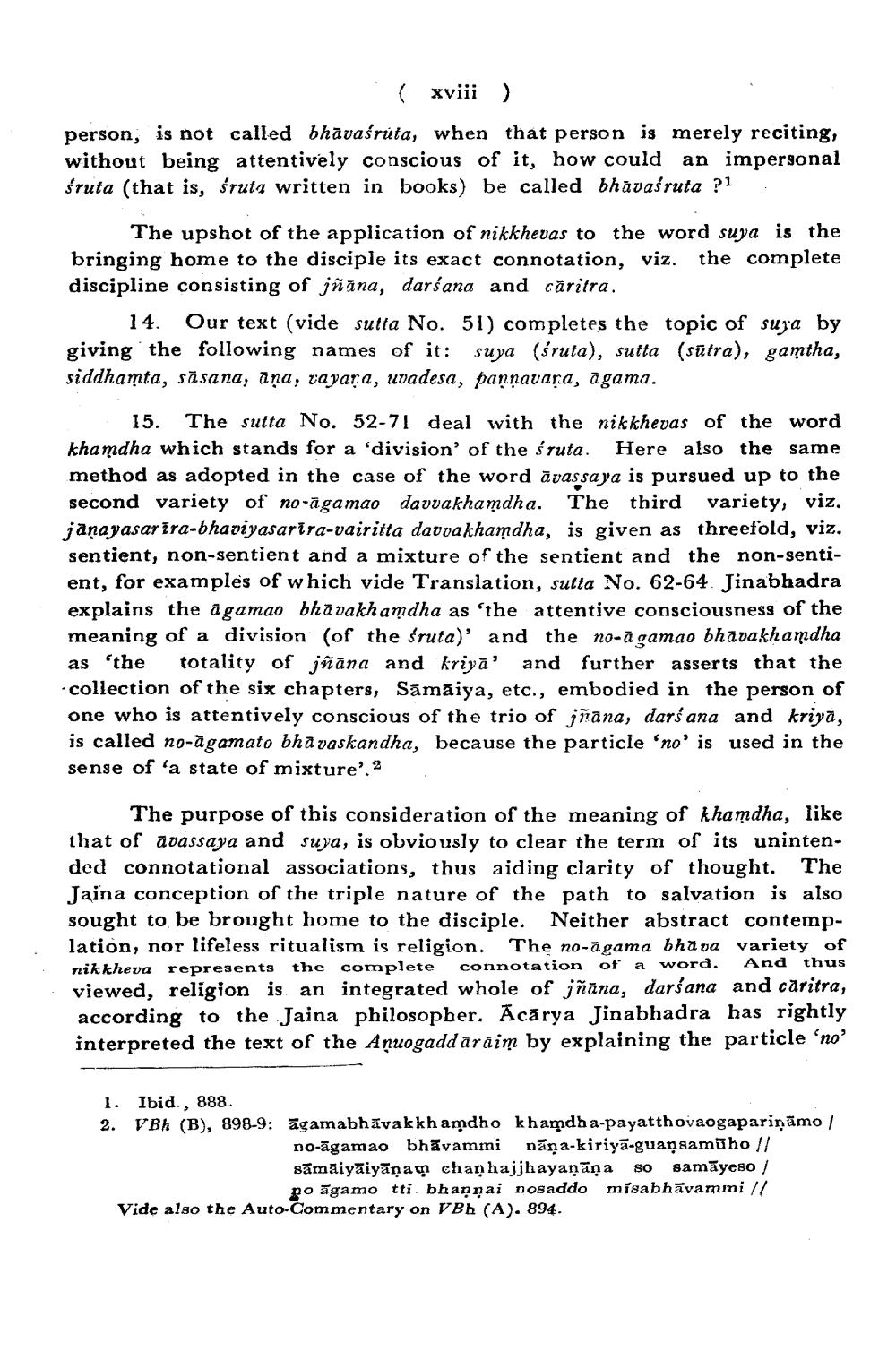________________
(
xviii)
without being atte
person, is not called bhāvaśrúta, when that person is merely reciting, without being attentively conscious of it, how could an impersonal śruta (that is, śruta written in books) be called bhāvašruta ?
The upshot of the application of nikkhevas to the word suya is the bringing home to the disciple its exact connotation, viz. the complete discipline consisting of jñana, darśana and caritra.
14. Our text (vide sutta No. 51) completes the topic of suya by giving the following names of it: suya (śruta), sutta (sūtra), gamtha, siddhamta, sāsana, āņa, vayara, uvadesa, pannavara, agama.
15. The sutta No. 52-71 deal with the nikkhevas of the word khamdha which stands for a 'division of the śruta. Here also the same method as adopted in the case of the word āvassa ya is pursued up to the second variety of no-agamao davvakhamdha. The third variety, viz. janayasarīra-bhaviyasarira-vairitta davvakhamdha, is given as threefold, viz. sentient, non-sentient and a mixture of the sentient and the non-sentient, for examples of which vide Translation, sutta No. 62-64. Jinabhadra explains the agamao bhāvakh amdha as 'the attentive consciousness of the meaning of a division (of the śruta)' and the no-ā gamao bhāvakhamdha as 'the totality of jñāna and kriya' and further asserts that the collection of the six chapters, Sámãiya, etc., embodied in the person of one who is attentively conscious of the trio of jñāna, darśana and kriya, is called no-agamato bhavaskandha, because the particle 'no' is used in the sense of a state of mixture'.
The purpose of this consideration of the meaning of khamdha, like that of avassaya and suya, is obviously to clear the term of its unintended connotational associations, thus aiding clarity of thought. The Jaina conception of the triple nature of the path to salvation is also sought to be brought home to the disciple. Neither abstract contemplation, nor lifeless ritualism is religion. The no-āgama bhava variety of nikkheva represents the complete connotation of a word. And thus viewed, religion is an integrated whole of jñana, darśana and caritra, according to the Jaina philosopher. Acārya Jinabhadra has rightly interpreted the text of the Anuogadd ar aim by explaining the particle 'no'
1. Ibid., 888. 2. VBh (B), 898-9: agamabhāvakkhamdho khamdha-payatthovaogapariņāmo /
no-āgamao bhāvammi nāņa-kiriya-guansamūho // sāmāiyāiyānam chan hajjhayaņāņa so samāyeso
po agamo tti. bhaņņai nosaddo misabhāvammi // Vide also the Auto-Commentary on VB (A). 894.




